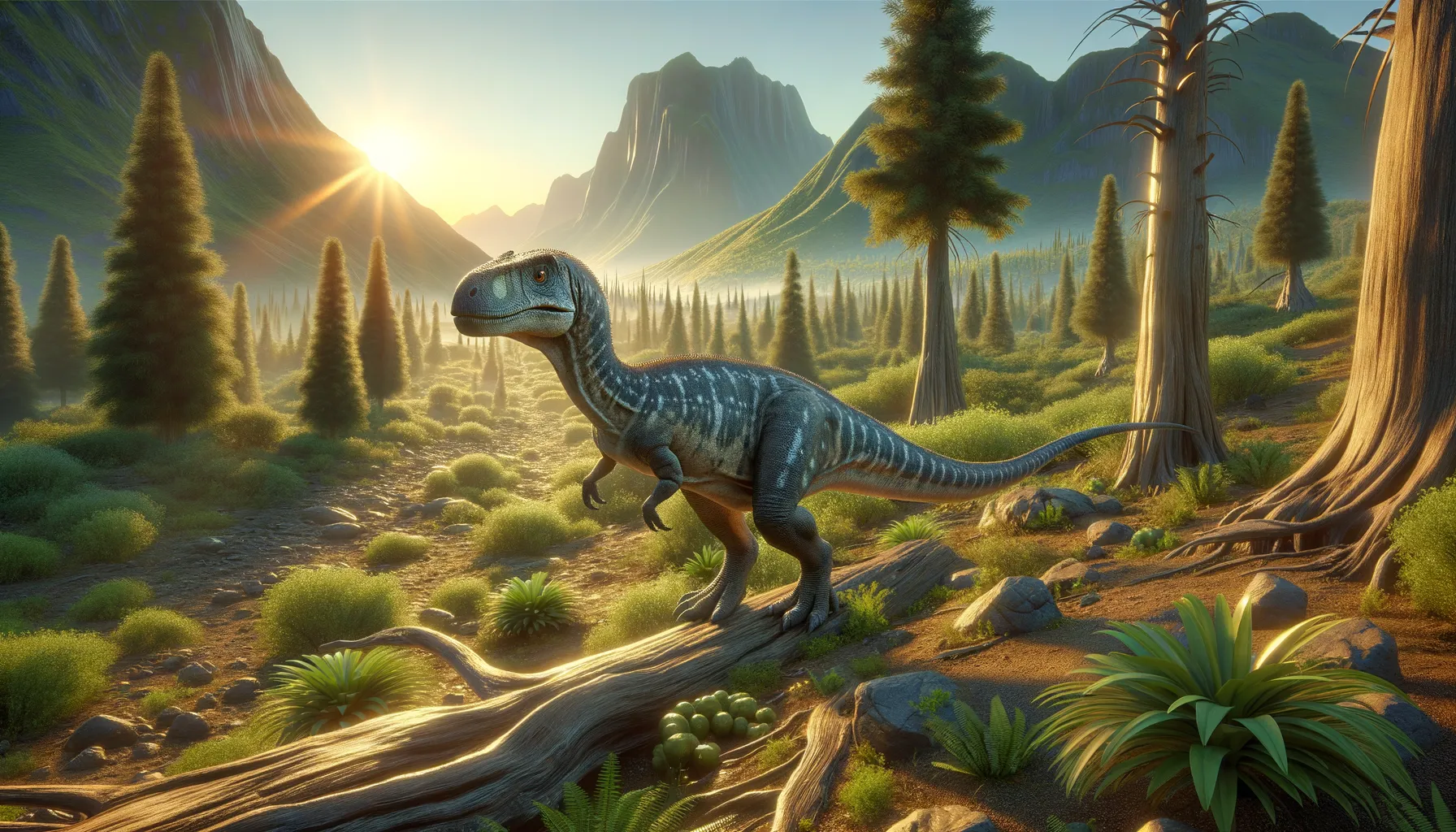
Thecodontosaurus
A look back to our first plant eaters.
Period
Triassic
Length
Approximately 2 meters in length.
Height
Stood about 1 meter tall at the hips.
Weight
Estimated to weigh around 20-40 kg.
Thecodontosaurus was a small herbivorous dinosaur from the Late Triassic period. It is one of the earliest known sauropodomorphs, providing key insights into the evolution of this group. Thecodontosaurus had a slender body with a long tail and neck, well-suited to its herbivorous lifestyle, likely feeding on vegetation at a low height. This dinosaur's fossils offer valuable information about the prehistoric ecosystems in which it lived.
Diet
Thecodontosaurus was herbivorous, primarily feeding on plants. Its teeth were adapted for chopping vegetation rather than grinding, suggesting it consumed softer, easily digestible plant matter.
Hunting
As a herbivore, Thecodontosaurus did not hunt other animals for food. It may have browsed for low-lying plants and lived in groups for protection against predators.
Environmental challenges
Thecodontosaurus lived during a time of fluctuating climates at the end of the Triassic period. This era involved a range of environments from lush, vegetated areas to arid sections. Habitat changes and emerging predators posed significant challenges, driving adaptations in their feeding habits and group living for better survival.
Speed
It was relatively slow, moving at moderate speeds.
Lifespan
Estimated to live around 15-20 years.
First discovery
First discovered in 1834 near Bristol, England.
Fun Facts
- Thecodontosaurus is one of the earliest known dinosaurs, living around 205 million years ago.
- This dinosaur was relatively small, about the size of a large dog, unlike its gigantic later relatives.
- Thecodontosaurus primarily walked on its two hind legs, which helped it reach higher vegetation.
- Fossils of Thecodontosaurus were first discovered in Bristol, England, in the early 19th century.
- Its name means 'tooth socket lizard,' reflecting its distinctive tooth structure.
- Thecodontosaurus is believed to have been a herbivore, feeding on plants and leaves.
- It was part of the group of dinosaurs known as prosauropods, which were precursors to the giant sauropods.
Growth and Development
Thecodontosaurus likely grew quickly to reach a size less vulnerable to predators. Their growth patterns suggest a focus on rapid skeletal development, allowing them to efficiently exploit their environments. The young are believed to have had different dietary needs and may have been more agile than adults.
Habitat
Thecodontosaurus thrived in what is now southwestern England, an area that provided varied plant life and a mild climate. This region was part of a lush, wooded environment with water sources nearby. Such habitats supported diverse fauna, allowing easy access to resources necessary for their survival.
Interaction with other species
Thecodontosaurus, as a plant-eating dinosaur, would have shared its environment with a range of other herbivores and potential predators. Its interactions likely involved competing for food and water resources with other herbivorous species. Group living might have provided safety in numbers against carnivorous threats.
Natural lifespan
Their natural lifespan was relatively short, around 15-20 years.
Reproduction
Reproduction in Thecodontosaurus was likely oviparous, laying eggs like many other dinosaurs. Nesting behaviors might have included burying their eggs in sand or earth to protect them from predators and temperature extremes.
Social behaviour
Thecodontosaurus may have lived in small herds or family groups. Social behavior was likely driven by a need for protection against predators and improved foraging for food. Group interactions may have included basic communication and cooperation during feeding.
Fossil locations
Fossils of Thecodontosaurus have been primarily found in the Clifton area of Bristol, United Kingdom. These discoveries provided valuable insights into part of the Late Triassic ecosystem. Additional remains have been uncovered in nearby regions, solidifying its status as a significant European prehistoric species.
